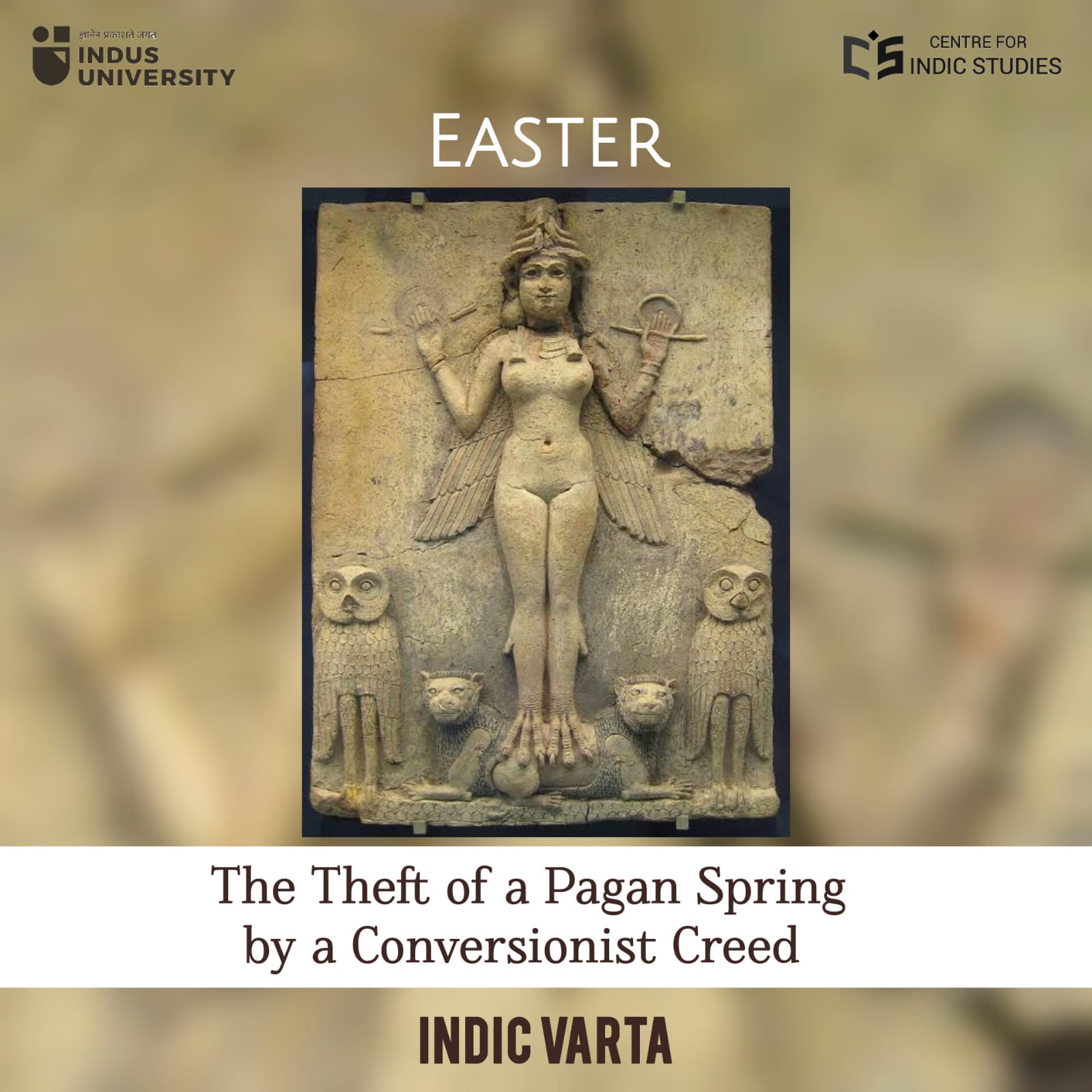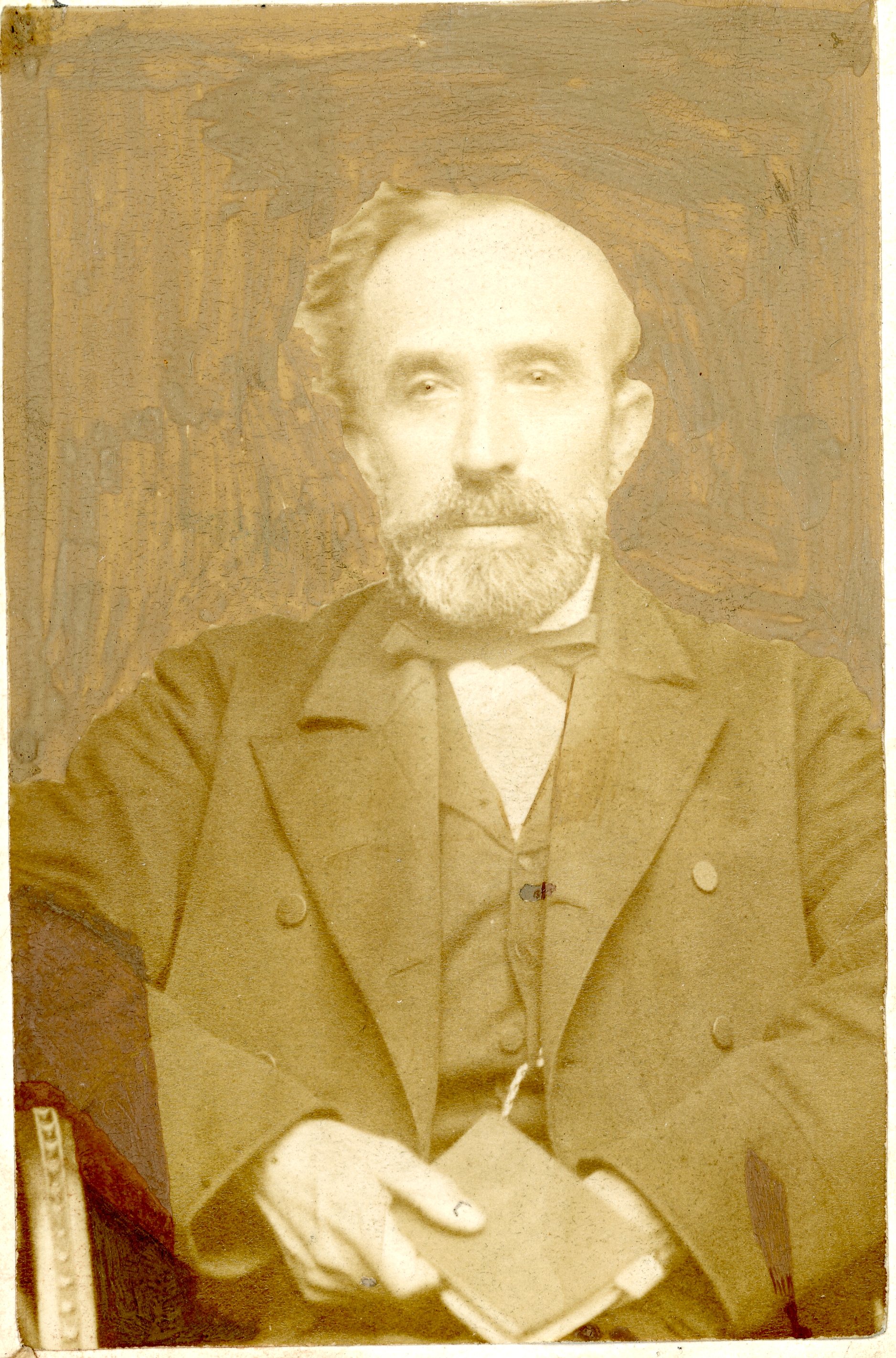- Visitor:250
- Published on: 2025-04-20
Easter: The Theft of a Pagan Spring by a Conversionist Creed
With the political ascendance of Christianity under the Roman Empire, a critical challenge emerged: how to consolidate spiritual authority over a vast and culturally diverse population deeply entrenched in their native traditions. Pagan festivals, rich with cosmic symbolism, ecological alignment, and ancestral significance, posed both an obstacle and an opportunity for the Church. These were not mere local curiosities—they were sophisticated, time-tested cultural expressions that bound communities to their environment, their history, and their gods. The Church, rather than confronting these traditions through overt confrontation or force in every instance, pursued a more enduring tactic: strategic appropriation. This was not simple coexistence or respectful synthesis—it was a calculated act of cultural assimilation and overwriting. Pagan symbols, rituals, and sacred days were not discarded but repurposed. Their external forms were preserved to ease the transition, but their inner meanings were gutted and replaced with Christian doctrine. The population was allowed to keep the festivals, but not the worldview that animated them.

Each year, churches around the world mark the “resurrection of Christ” with celebrations that seem oddly out of place for a solemn theological event—chocolate eggs, rabbits, springtime cheer, and the sudden rise of fertility motifs. These symbols, now sanitized and commercialized, are not Christian in origin. They are pagan—rooted in ancient nature-worship, feminine divinity and cyclical cosmology. Easter, far from being a sacred Christian festival, is a textbook example of how a proselytizing religious empire stole, absorbed, and repurposed native traditions to draw indigenous peoples into its fold.
Pagan Spring Festivals: The Original Celebration
Long before the rise of Christianity, the transition from winter to spring was one of the most sacred periods in the calendar of pre-Christian European civilizations. This season, marked by the vernal equinox—when day and night are in perfect equilibrium—was not just a time of climatic change but a deeply spiritual moment. It symbolized the rebirth of nature, the return of light after the long darkness of winter, and the fertility of the earth reawakening to life. This was the cosmic rhythm to which entire societies aligned their festivals, agricultural cycles, and ritual practices.
One of the most enduring figures from this period is Eostre (or Ostara), a Germanic goddess whose name is etymologically tied to the word "East"—the direction of the rising sun and thus, renewal. The Venerable Bede, an 8th-century Anglo-Saxon monk and historian, documented in De Temporum Ratione that during the month called Eosturmonath (April), pagan Anglo-Saxons celebrated festivals in honor of this goddess. Though Bede’s account is brief, it remains one of the few written records of Eostre, and later folklorists and neopagan scholars have filled in the cultural picture through comparative mythology and linguistic evidence.
Central to these springtime festivals were symbols that have endured to this day, albeit stripped of their original context. The egg, for instance, was revered across many ancient cultures—not only in Europe but also in Mesopotamia and Egypt—as a symbol of creation, renewal, and life. Eggs were buried in graves as offerings for the afterlife, painted in ritual colors, and used in spring ceremonies that predate any Christian observance.
The hare or rabbit, too, was a powerful fertility symbol. Unlike modern associations of cuteness, the hare was revered for its untamed vitality and reproductive abundance. In Celtic and Germanic traditions, hares were connected to lunar cycles and often depicted alongside goddesses of fertility. Their nocturnal activity and presence in spring made them potent emblems of awakening life.
These traditions were not mere "folklore" in the pejorative sense, nor were they superstitions dismissed by reason. They were civilizational expressions of harmony with the natural order—an ethos built on cyclical time, reverence for the Earth, and ritual acknowledgment of life's impermanence and regeneration. They were rituals of participation, not domination—cosmologically tuned practices in which humans saw themselves as part of, not above, the web of existence.
It is important to note that these pagan festivals were not centralized religions with hierarchies and dogmas; they were fluid, locally grounded spiritual ecosystems. From the Druidic traditions of the Celts to the Germanic and Norse rites of Northern Europe, the springtime celebrations were unique to each ecology yet unified by their acknowledgment of life’s return—a theme too archetypal to be owned or overwritten.
Easter: The Strategic Hijacking
With the political ascendance of Christianity under the Roman Empire, a critical challenge emerged: how to consolidate spiritual authority over a vast and culturally diverse population deeply entrenched in their native traditions. Pagan festivals, rich with cosmic symbolism, ecological alignment, and ancestral significance, posed both an obstacle and an opportunity for the Church. These were not mere local curiosities—they were sophisticated, time-tested cultural expressions that bound communities to their environment, their history, and their gods.
The Church, rather than confronting these traditions through overt confrontation or force in every instance, pursued a more enduring tactic: strategic appropriation. This was not simple coexistence or respectful synthesis—it was a calculated act of cultural assimilation and overwriting. Pagan symbols, rituals, and sacred days were not discarded but repurposed. Their external forms were preserved to ease the transition, but their inner meanings were gutted and replaced with Christian doctrine. The population was allowed to keep the festivals, but not the worldview that animated them.
By the 4th century, this strategy had become formalized. The Council of Nicaea in 325 CE, convened under the Roman Emperor Constantine, who had recently converted to Christianity, marked a decisive moment. It was during this council that the Church institutionalized the date of Easter, declaring it to fall on the first Sunday after the first full moon following the spring equinox—the very same astronomical markers that had governed pagan spring festivals for millennia. The equinox, once celebrated as a sacred cosmic moment of balance and renewal, was now reframed through the lens of a single historical narrative—the resurrection of Jesus Christ.
The message was stark: cosmic cycles would survive, but only under Christian authorship. What had once been a decentralized, pluralistic, and nature-affirming celebration was transformed into a theologically linear commemoration of divine conquest over death. The Church did not need to burn every grove or silence every song—it needed only to rename them, redirect their meaning, and place them under new spiritual jurisdiction.
This repurposing of sacred time and space was not limited to Easter. It was part of a broader pattern. The Church declared pagan deities to be demons, sacred groves and temples to be sites of sin, and ancestral rites to be heresies. Yet rather than destroying these outright, the Church often built over them—literally and symbolically. Pagan temples became churches; seasonal festivals like Yule became Christmas; the goddess Brigid of the Celts was canonized as Saint Brigid. These were not gestures of inclusion—they were acts of spiritual erasure masked as integration.
Such syncretism was effective because it operated below the threshold of overt coercion. It allowed conquered populations to maintain a superficial continuity with their past while reconditioning them into a new civilizational framework. Over time, memory itself was colonized. What had once been cultural expressions rooted in ecological rhythms and metaphysical plurality were now reframed as remnants of a ‘pagan’ ignorance surpassed by Christian truth.
This process constituted nothing less than a systemic civilizational hijack. Entire populations were severed from their ancestral cosmologies—not through dialogue, but through gradual substitution. The metaphysical frameworks that had governed their lives were recast as heresy, and in their place arose a religion that demanded not participation in the rhythms of nature but submission to a singular, linear historical claim.
What makes this particularly profound is not just the historical loss, but the loss of civilizational self-awareness. People across Europe came to celebrate holidays with symbols and rituals whose origins they no longer understood—eggs and hares, bonfires and solstice trees—all stripped of their native context, their meaning now retrofitted to serve an imperial religion.
The absorption of spring festivals into Easter was not an isolated anomaly. It was part of a much larger ecclesiastical machinery of appropriation, one that succeeded not just in conversion, but in the obliteration of alternative metaphysical frameworks. By aligning its liturgical calendar with the rhythms of the land, the Church ensured it would dominate time itself—not only the space of temples but the sacred seasons through which cultures had once found coherence and meaning.
Eggs, Rabbits and the Death of Meaning
Modern Easter continues to be decorated with fertility symbols: eggs, bunnies and blooming flora. But their meanings have been gutted. The egg, once a symbol of the cosmic womb and regeneration, is now a hollow chocolate treat. The rabbit, once revered for its connection to the lunar cycle and fertility, is now a cartoon mascot.
This is not harmless syncretism—it is dismemberment. Sacred symbols were stripped of their original cosmology and repurposed to fit a narrative of linear salvation through Christ. The cycles of life, honored by pagans, were replaced by the finality of sin, death, and resurrection. Nature was no longer sacred; it became a backdrop to a theological script.
Dominate, Redefine, Convert
The Easter story is emblematic of a wider pattern within Christianity’s expansion: enter a culture, declare its gods false, and then absorb its festivals, language, and art under a new religious framework. From the winter solstice becoming “Christmas” to the goddess Brigid becoming Saint Brigid, the pattern repeats.
This wasn’t done for cultural harmony. It was a missionary strategy—using familiarity to convert. By incorporating local symbols, Christianity could mask its foreignness, making it easier to displace existing traditions. The Church claimed continuity, but delivered rupture.
This is why even today, despite Easter’s overt Christian framing, the surviving elements are all pagan. And yet, the source civilizations are forgotten, their wisdom misrepresented, and their dignity erased.
An Indic Perspective: The Integrity of Sacred Time
In the Indic worldview, time is not linear but cyclical. Festivals like Vasant Panchami, Chaitra Navratri, and Holi are not pegged to historical events but to natural rhythms—celebrating fertility, divine femininity, and cosmic renewal. These festivals remain anchored in the ṛta—the natural, cosmic order. Their symbols are not abstracted from their meanings. No outsider dogma has overwritten their purpose. In contrast, Easter represents what happens when a missionary religion overwrites a sacred calendar for doctrinal gain. The pagan spring—once an homage to Earth, balance, and birth—has been absorbed into a narrative of conquest, guilt, and enforced belief.
This is not just history—it is an ongoing civilizational struggle between traditions that revere the Earth and traditions that dominate it; between cultures that celebrate plurality and systems that demand singularity.
Reclaiming What Was Stolen
Easter is not Christian. It is a co-opted celebration, built on stolen gods, stolen symbols, and a stolen season. It stands as a monument to a missionary campaign that could not tolerate alternative sacredness—so it wore its skin, mimicked its rhythms, and silenced its voice.
To see Easter with clear eyes is to pierce through a millennia-long veil of cultural erasure and ecclesiastical repackaging. Beneath the cross looms not salvation, but the memory of a severed world tree—cut down not in ignorance, but with deliberate intent. That tree once connected heaven, earth, and the cycles of life. It was uprooted to make room for an imported theology that demanded submission over celebration.
This is not just about history—it is about memory, metaphysics, and civilizational continuity. Those who descend from pagan, polytheistic, and indigenous traditions—including the dharmic lineages of Bharat—must not only preserve their own sacred practices, but name the thefts for what they are. Appropriation is not reconciliation. It is conquest wrapped in ritual, dominion masked as devotion.
To reclaim the truth behind Easter is to reclaim more than a festival. It is to resist spiritual colonization, to honor nature’s rhythm without distortion, and to stand, once more, under open skies rather than behind doctrinal walls. It is to say: the sacred does not belong to the empire. It never has.
References
“Ostara/Eostre: Hail to the Goddess of the Dawn & Spring”; https://idyllsofthequeen.blog/2023/03/27/ostara-eostre-hail-to-the-goddess-of-the-dawn-spring/ “The Origins and Practices of Holidays: Ostara, Holi, and Purim”; https://www.bpl.org/blogs/post/the-origins-and-practices-of-holidays-ostara-holi-and-purim/ “First Council of Nicaea”; https://www.britannica.com/event/First-Council-of-Nicaea-325 “The Irish Goddess Brigid vs. Saint Brigid”; https://irishmyths.com/2025/01/16/brigid/ “How Yule Became Christmas”; https://usghostadventures.com/haunted-stories/25-days-of-christmas/how-yule-became-christmas/ “Origin of Easter: From pagan festivals and Christianity to bunnies and chocolate eggs”; https://www.abc.net.au/news/2017-04-15/the-origins-of-easter-from-pagan-roots-to-chocolate-eggs/8440134
- 125 min read
- 5
- 0










